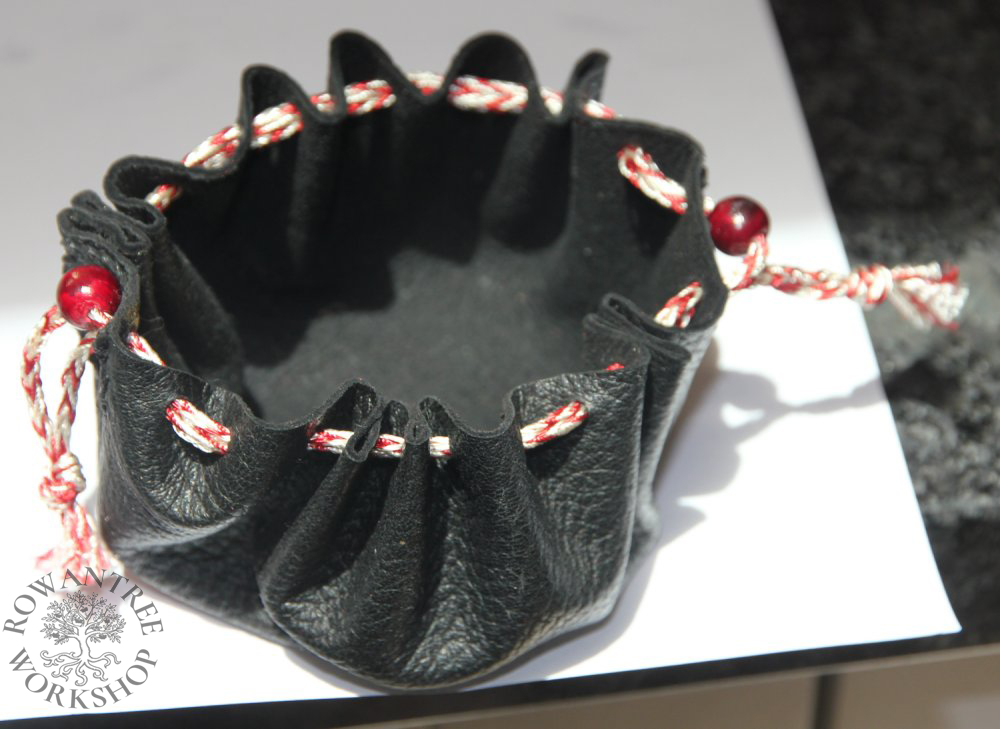A simple drawstring purse with fingerloop drawstrings, of a style in use throughout the middle ages to hold coins and small objects.
A group of us were making a surprise gift for my friend Hugh, and I was asked to contribute a penner and a money purse – a nice simple project. His focus is 14th century France, so we made everything in this style.
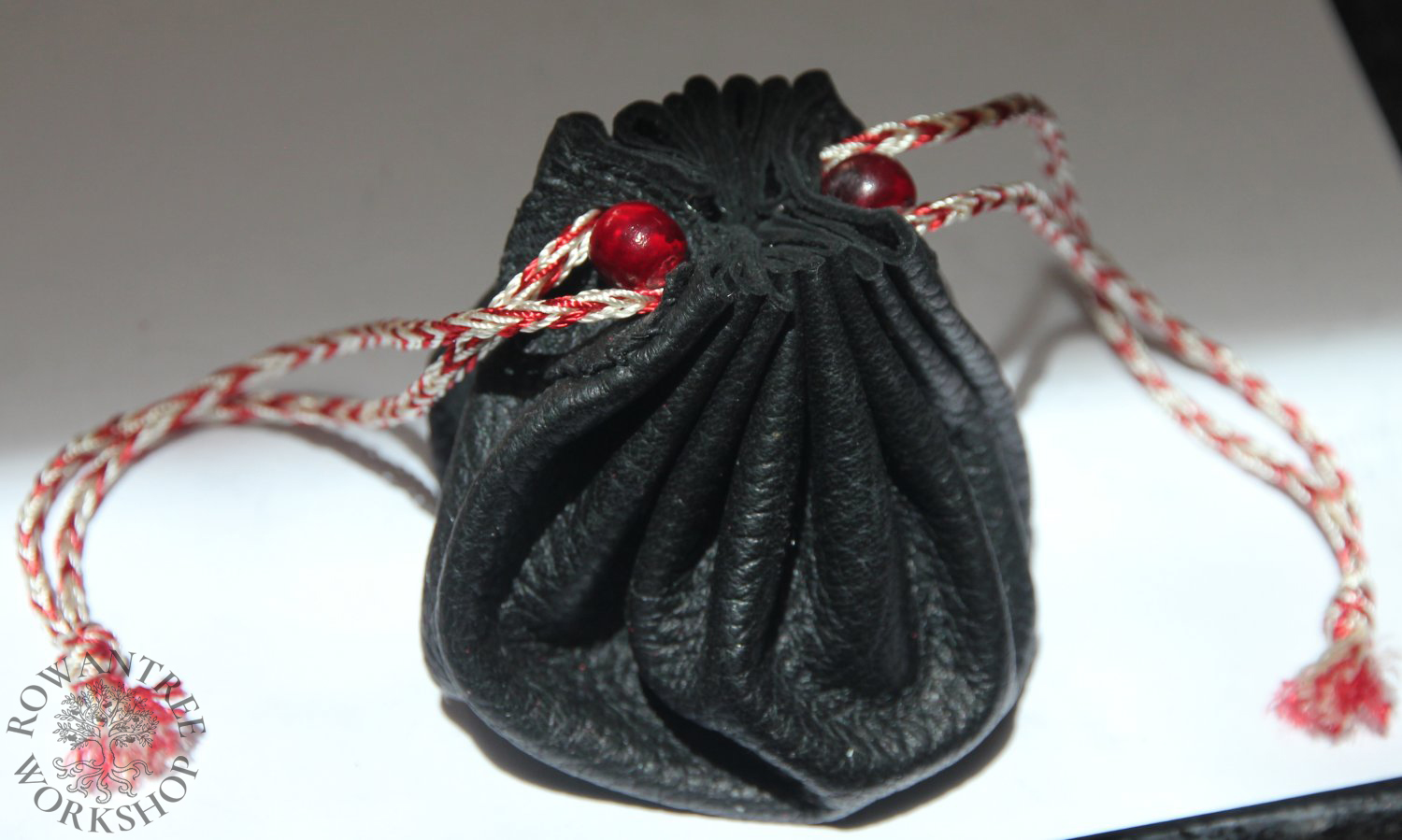
Research & Design
Drawstring purses are known from the Roman era and continued in use by both men and women through to the 13th century, worn suspended from the belt (women continued to use this style for many more centuries).
By the mid 14th century, men’s purses in France (as much of Europe) were typically a flat leather flap purse suspended from the belt on two loops. And Hugh had already made himself an excellent purse in this style.
However, drawstring purses continued to be used to hold coins, relics and other small objects. When used this way they typically have two opposing drawstrings but no hanging cord, as can be seen in the painting by Huguet below.
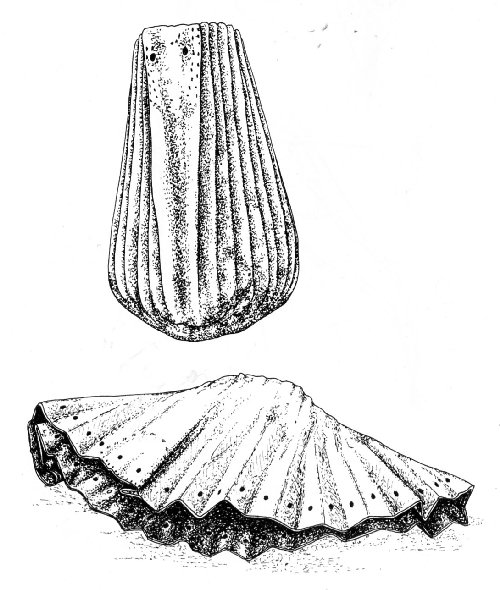
Source: Goubitz (2007:67)
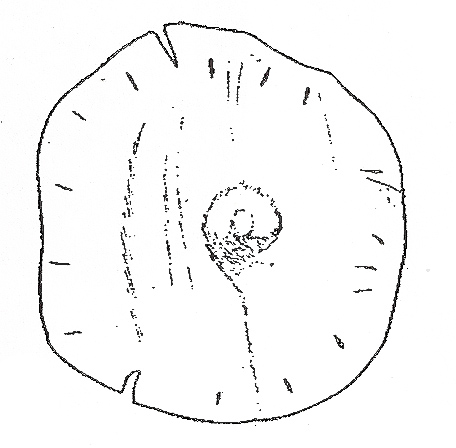
Source: Dr Fuller
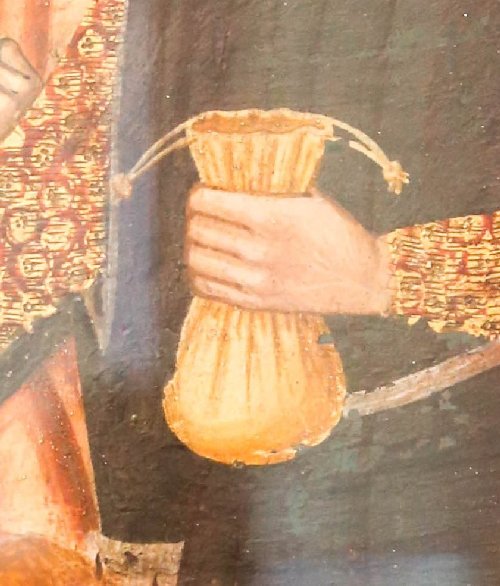
Source: Thyssen-Bornemisza
Goubitz (2007) notes that the round based form is most common in the late middle ages, cut in several ways, including a simple circle. The Russian example shown above has this same simple form.
The reinforcing tab and bead are seen in some extant examples – they seem to be more a feature of coin purses than reliquary purses or seal bags. The drawstrings could be made of many materials, but Egan & Pritchard (1991) note the prevalence of silk fingerloop braiding on drawstring purses – even on leather examples.
Although Goubitz suggests that goatskin was common for such purses, I made use of some soft oil-tanned black deerskin, left over from another project.
Construction
The simple circle is quick and easy, but not efficient in terms of materials. I did a test in heavy fabric to see how small I could go and still have a practical purse – 20cm was a useful size. I made a simple paper pattern, folding it into 32 segments to get an even hole spacing.
I cut the leather and small reinforcing tabs, then marked and punched holes around the edge. I sewed on the tabs, and punched these again – end of construction! To close the purse I made a pair of fingerloop braids of 5 bowes in red and white silk, to reference Hugh’s heraldic colours.
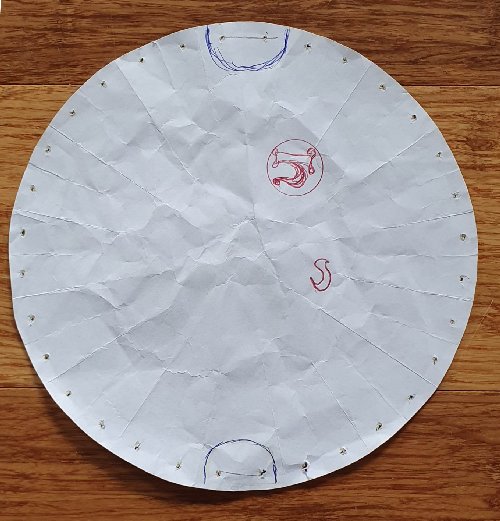

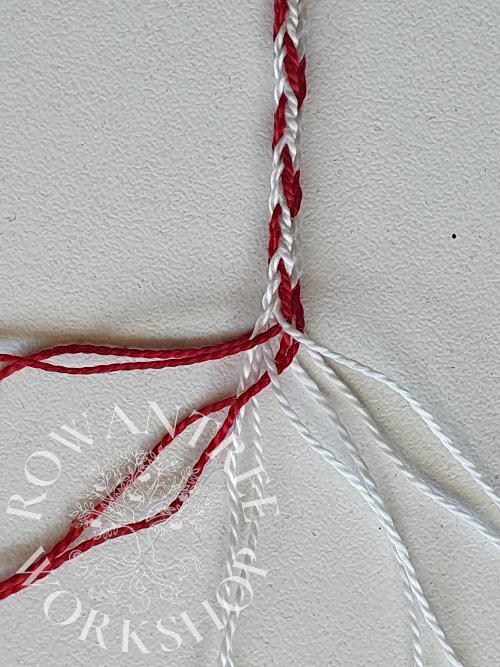
The last step was to thread up the purse with the pair of strings, tying the ends together to make little tassels. The red glass bead on the loops over the reinforcing tabs are optional, but make it easier to open when pulled tight. Done!
